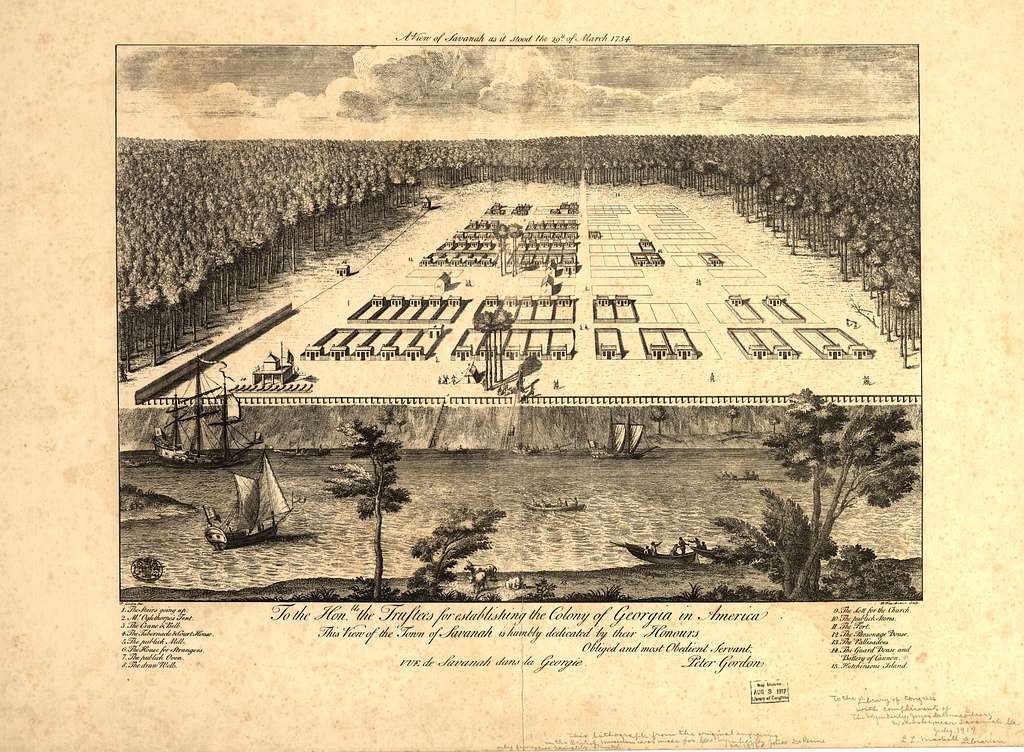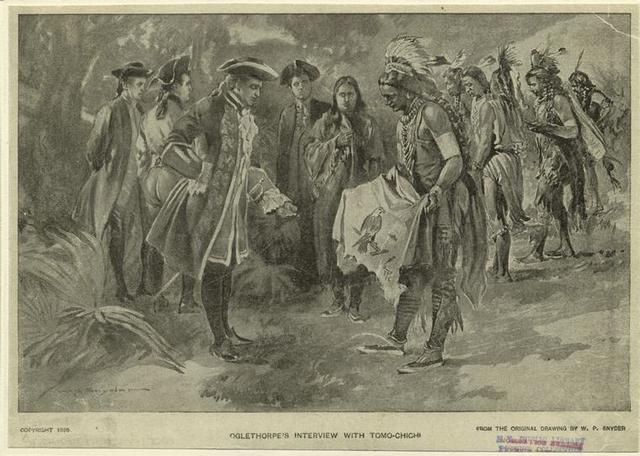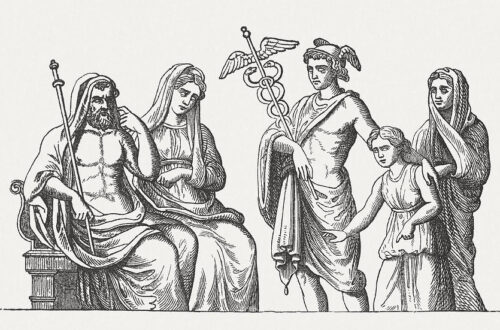
The Best 25 Interesting Facts About Georgia Colony
Facts About Georgia Colony
Here, we will delve into “interesting facts about Georgia Colony”. A mosaic of narratives that defined not just the original colonies but also the present state of Georgia and the United States at large.
Welcome, history enthusiast, on a riveting exploration of the Georgia Colony. A captivating chapter in the epic of the United States.
Your curiosity and interest in understanding the roots of American history are admirable. And we aim to satisfy this thirst for knowledge through this article.
The Founding of Georgia Colony: The Last of the British Colonies
The Georgia Colony was the last of the British colonies in North America.
Established as the Province of Georgia in 1733 by General James Oglethorpe. The colony was situated between the Savannah and Altamaha Rivers, with the Atlantic Ocean to its east.
Its establishment aimed to serve as a buffer zone against Spanish Florida to the south and the French colonies to the west, past the Mississippi River.
The Role of General James Oglethorpe
The founding of Georgia Colony owes much to General James Oglethorpe, a visionary with a utopian experiment in his mind.
With the approval of the British government and the Royal Charter, Oglethorpe, and his associates formed the Board of Trustees to govern the new colony.
Their mission was to provide a fresh start, a new life to debtors and impoverished English settlers.
Fostering an egalitarian society – a stark contrast to the large plantations common in other southern colonies.
Interesting Facts about Georgia Colony: Insights from the Past
Now, let’s traverse the timeline of history to uncover some fun and “interesting facts about Georgia Colony”. A tale that weaves the present with the past.
The Name Georgia
The colony of Georgia was named in honor of King George II. Representing a significant bond with Great Britain, the mother country.
Georgia’s Role in History
Georgia played an important role in many historical events, from the American Revolutionary War to the Civil Rights Movement.
With notable figures like Martin Luther King Jr. and President Jimmy Carter hailing from this state.
The Indigenous People
The first people of Georgia were Native Americans, who had an enriched culture and sophisticated political system before the arrival of the European settlers.
Land Grants and the Concept of “Forty Acres and a Mule”
After the Civil War, Union General William Tecumseh Sherman issued Special Field Order No. 15.
Which proposed distributing acres of land to newly freed African Americans.
However, this order was rescinded later, casting a significant effect on the state’s post-war reconstruction.
The Landscape and Geography of The Georgia Colony
The Georgia Colony boasted a warm climate, fertile lands, and an array of natural resources. Its landscape ranged from the Blue Ridge Mountains to the Okefenokee Swamp.
The Province of Georgia
The Province of Georgia became a royal colony in 1752, following the departure of Oglethorpe and the dissolution of the Board of Trustees.
The British Parliament then governed it as a crown colony until the American Revolutionary War.
The Role of Religion in Georgia Colony
Georgia, unlike some English colonies, was founded with a principle of religious freedom.
John Wesley, later the founder of the Methodist Church, served as a minister in Savannah during the colony’s early years.
Interestingly, however, the original charter barred Roman Catholics from settling in Georgia.
The Influence of Spanish Florida and Southern Colonies

The presence of Spanish Florida and other southern colonies deeply influenced the Georgia Colony.
Being in proximity to Spanish Florida, Georgia was often involved in territorial disputes. Which reached its zenith in the Battle of Bloody Marsh in 1742.
On the other hand, the other southern colonies, particularly South Carolina, profoundly impacted Georgia’s economy.
The prosperous plantations of South Carolina influenced Georgia’s transition towards a plantation-based economy.
Cotton production eventually became an economic mainstay of the colony. Shaping the socio-economic fabric of this part of the New World.
Impact of the Georgia Colony on Modern Georgia and the United States
Modern Georgia, the “Peach State,” and the United States still bear the imprint of their colonial past.
The city of Savannah, the original capital city of the Georgia Colony, is now a significant cultural and industrial hub.
The gold rush in the 1800s spurred the growth of towns like Dahlonega. And the legacy of Stone Mountain provides a stark reminder of the Civil War era.
Fun Facts: The Spice of Georgia Colony’s History
Unveiling fun facts about the Georgia Colony will enhance our understanding of this crucial piece of American history.
This journey takes us through significant events, like the War of Jenkin’s Ear. The involvement of Indian chiefs, and the establishment of settlements like Port Royal and Charles Town.
The War of Jenkin’s Ear
One unique and riveting fact in the timeline of the Georgia Colony is the War of Jenkin’s Ear.
This conflict took place from 1739 to 1748 between Britain and Spain. And played a significant role in shaping the dynamics of the colonies in North America.
Georgia, acting as a buffer between Spanish Florida and the English colonies, found itself embroiled in this war.
Which was partly responsible for escalating tensions leading to the Battle of Bloody Marsh.
Influence of Indian Chiefs

The involvement of Indian chiefs in the early development of the colony, especially during the founding years, is also noteworthy.
One such prominent figure was Tomochichi, the chief of the Yamacraw Indians.
He played a significant role in establishing peaceful relations with General Oglethorpe and the English settlers.
Key Settlements: Port Royal and Charles Town
The founding of the Georgia Colony led to the establishment of several settlements, including Port Royal and Charles Town.
While Port Royal eventually became a part of South Carolina, it played a crucial role in early Georgia’s trade and defense.
On the other hand, Charles Town, located in present-day North Carolina, was a strategic post for British expansion in the south.
Governance in the Georgia Colony
The governance structure of the Georgia Colony, led by the Council of Trustees, is another interesting facet of its history.
Also, the Council of Trustees, formed under the original charter, was responsible for managing the colony’s affairs. Until Georgia became a royal colony in 1752.
Plus, the trustees were responsible for establishing laws, granting land, and making key decisions for the welfare of the colony.
From Proprietary Colony to the Fourth U.S. State
The transition of Georgia from a proprietary colony to the fourth U.S. state is a critical event in American history.
After the departure of Oglethorpe, the control of Georgia was handed over to the British Crown.
The Colony was managed by the Privy Council in Britain until the eve of the American Revolutionary War.
After gaining independence, Georgia was the fourth colony to ratify the United States Constitution on January 2, 1788, officially becoming the fourth U.S. state.
Georgia Colony: A Tapestry of Influences
Georgia Colony was influenced by its neighboring colonies. The New England Colonies to the north, the Middle Colonies, and North Carolina.
Each played a role in shaping the culture, economy, and political structure of colonial Georgia.
Claimed by Spain, Founded by the English
Interestingly, before becoming an English Colony, the Spanish had laid claim to Georgia.
Spanish missionaries were among the first Europeans to explore the region. Establishing missions along the coast during the 16th century.
However, their presence diminished due to conflicts with indigenous people and rival European powers.
Paving the way for the English to establish the last of their colonies in the New World.
Interesting facts about Georgia Colony
Understanding the “interesting facts about Georgia Colony” is akin to embarking on a journey through time.
From the War of Jenkin’s Ear to the role of Indian chiefs, the founding of the colony, and the influence of neighboring colonies – each element tells a unique story of this significant chapter in American history.
With every square mile, from the city of Savannah to the Blue Ridge Mountains, the history of the Georgia Colony unfolds.
It’s a testament to the resilience and spirit of those early settlers who ventured into the unknown. Shaping a legacy that resonates in the fabric of modern America.
From its establishment as a refuge for debtors and the poor to its pivotal role in the American Revolutionary War, the history of the Georgia Colony is a testament to the enduring spirit of survival, adaptation, and evolution.
The relationships that the settlers forged with the Native Americans, their ingenuity in exploiting the natural resources. And their resilience in the face of foreign threats all play into the vibrant narrative of Georgia Colony.
Georgia’s transformation from a proprietary colony to a royal colony under the British Crown, and finally to a state within the United States, tells a story of political evolution.
The Fourth State to Ratify the U.S. Constitution

As the fourth state to ratify the U.S. Constitution, Georgia Colony marked its place in the founding story of the United States.
The influence of neighboring New England and the Middle Colonies helped shape the sociopolitical landscape of the Georgia Colony.
The spirit of enterprise from the New England colonies, coupled with the diverse cultural influences from the Middle Colonies, left a lasting impact on Georgia Colony.
The early struggles, the socio-political changes, the delicate alliances with Native American tribes, and the eventual integration into the United States – each of these elements paints a nuanced picture of Georgia Colony’s history.
They speak of a time of great change and the forging of a nation that would become a world power.
As we reflect on these “interesting facts about Georgia Colony,” we gain a deeper understanding of its founding principles, its challenges, its triumphs, and its enduring legacy.
By appreciating our shared history, we can better comprehend our present and shape a future that upholds the lessons learned from our past.
In conclusion, the tale of the Georgia Colony is an intricate part of the broader tapestry of American history.
It serves as a powerful reminder of our nation’s journey from a collection of colonies to the united, diverse, and resilient country we know today.
As we delve into our rich historical legacy, we continue to uncover valuable insights about our identity, our values, and our shared destiny.
From the first year of its founding to its current status as the fourth U.S. state, the Georgia Colony story is a timeless journey that continues to educate, inspire, and captivate us all.
8 Frequently Asked Questions About The Colony of Georgia
Who were the first Europeans to explore Georgia?
The first Europeans to explore Georgia were Spanish conquistadors who laid claim to the region in the early 16th century.
What role did the Colony of Georgia play during the American Revolutionary War?
The Colony of Georgia played a significant role in the American Revolutionary War. Georgia’s strategic location on the southern frontier and its port at Savannah made it a crucial theater of conflict during the war.
Why was the Colony of Georgia established?
The Colony of Georgia was established as a buffer zone between the British settlements in the Carolinas and Spanish Florida. Additionally, it served as a new settlement for impoverished English settlers and debtors to start a new life.
Who was the founder of the Colony of Georgia?
General James Edward Oglethorpe is credited as the founder of the Colony of Georgia.
What’s the significance of the Georgia Colony in American history?
The Georgia Colony holds great significance in American history.
From being the last of the 13 original colonies to playing an integral part in the American Revolutionary War.
And serving as the home state of notable figures like Martin Luther King Jr. and Jimmy Carter. The influence of the Georgia Colony is far-reaching.
How did the Georgia Colony become the fourth U.S. state?
Georgia was the fourth colony to ratify the United States Constitution on January 2, 1788, making it the fourth state in the United States.
How did the economy of the Georgia Colony evolve?
The economy of Georgia Colony evolved from a modest subsistence farming society to a robust plantation economy. Heavily reliant on cotton production and slave labor.
How did Georgia’s colonial past shape its cultural heritage?
The cultural heritage of Georgia is deeply rooted in its colonial past.
The indigenous people, British settlers, and African American influence have combined to create a unique cultural blend. That is evident in the music, art, and culinary traditions of Georgia.
Facts About Georgia Colony Conclusion
The Georgia Colony, the last of the original colonies, holds an important place in the annals of American history.
This journey through the “interesting facts about Georgia Colony” offers a peek into the intricate tapestry of events that have shaped modern Georgia and the United States.
From its founding as a utopian experiment to its evolution into a robust economy, its pivotal role in the American Revolutionary War.
Plus its deep impact on the civil rights movement, the history of the Georgia Colony continues to inspire and inform us about our shared past.
The tapestry of history is vast and varied, much like the landscape of Georgia itself. From the Savannah River to the Blue Ridge Mountains – and continues to be a source of fascination and learning.
Let this exploration serve as a springboard to further understand the nuances of this vibrant chapter in American history.
As we acknowledge our past, we carve a path for the future, understanding the ebb and flow of societal change and progression.
From the warm climate that facilitated agriculture to the diverse natural resources that shaped its economy.
Every aspect of the Georgia Colony, including its struggle and success, contributes to the rich narrative of American history.
The Colony’s fascinating journey

The Colony’s fascinating journey from its humble beginnings on Yamacraw Bluff, overlooking the Savannah River, to its crucial role in the formation of the United States.
The echoes of history resound in the streets of Savannah, in the cotton fields of the southern states. Also in the majestic Blue Ridge Mountains, and the hearts of Georgians.
From the sturdy Mulberry trees that once symbolized the state’s initial focus on silk production, to the lush cotton fields reflecting the shift in economic strategy.
Georgia’s landscape paints a vivid picture of its colonial past.
Landmarks like the capital city of Savannah and the historical monument of Stone Mountain serve as physical reminders of the triumphs and tribulations of Georgia’s journey.
It’s impossible to ignore the importance of influential figures like General Oglethorpe. Whose utopian vision laid the foundation for the Georgia Colony.
Plus, Martin Luther King Jr., a son of Georgia whose fight for equality reverberated throughout the United States and beyond.
The story of the Georgia Colony
The story of the Georgia Colony is a testament to the resilience and evolution of societies.
It serves as a potent reminder that our present is shaped by our past.
And that understanding history is critical to making sense of our current societal dynamics and envisioning our collective future.
The Colony of Georgia has indeed evolved into the Empire State of the South. But its heart beats to the rhythm of its rich historical legacy.
Whether you’re a history buff, a student exploring the roots of American history. Or someone simply interested in the heritage of the United States.
I hope this exploration of “interesting facts about Georgia Colony” has been both enlightening and engaging.
Here’s to learning and understanding more about our past to build a better future.
The tales of the Georgia Colony, woven into the broader narrative of the United State’s past, present a vibrant panorama of resilience, vision, and evolution.
It is these stories from the past that will continue to enlighten us and shape our understanding of the world.
So, let’s keep unraveling history, one fact, one story at a time. For instance, do you know about Sacagawea?
A Remarkable Native American Guide of the Lewis and Clark Expedition. She played a crucial role as a guide and interpreter.
With every square mile of Georgia, the echoes of the past blend with the rhythm of the present.
Reflecting a history that’s as diverse and dynamic as the United States itself.
As we delve deeper into history, it’s evident that the legacy of the Georgia Colony is not just confined to textbooks. It’s etched in the soil of the Peach State, whispering the tales of time.





One Comment
Pingback: